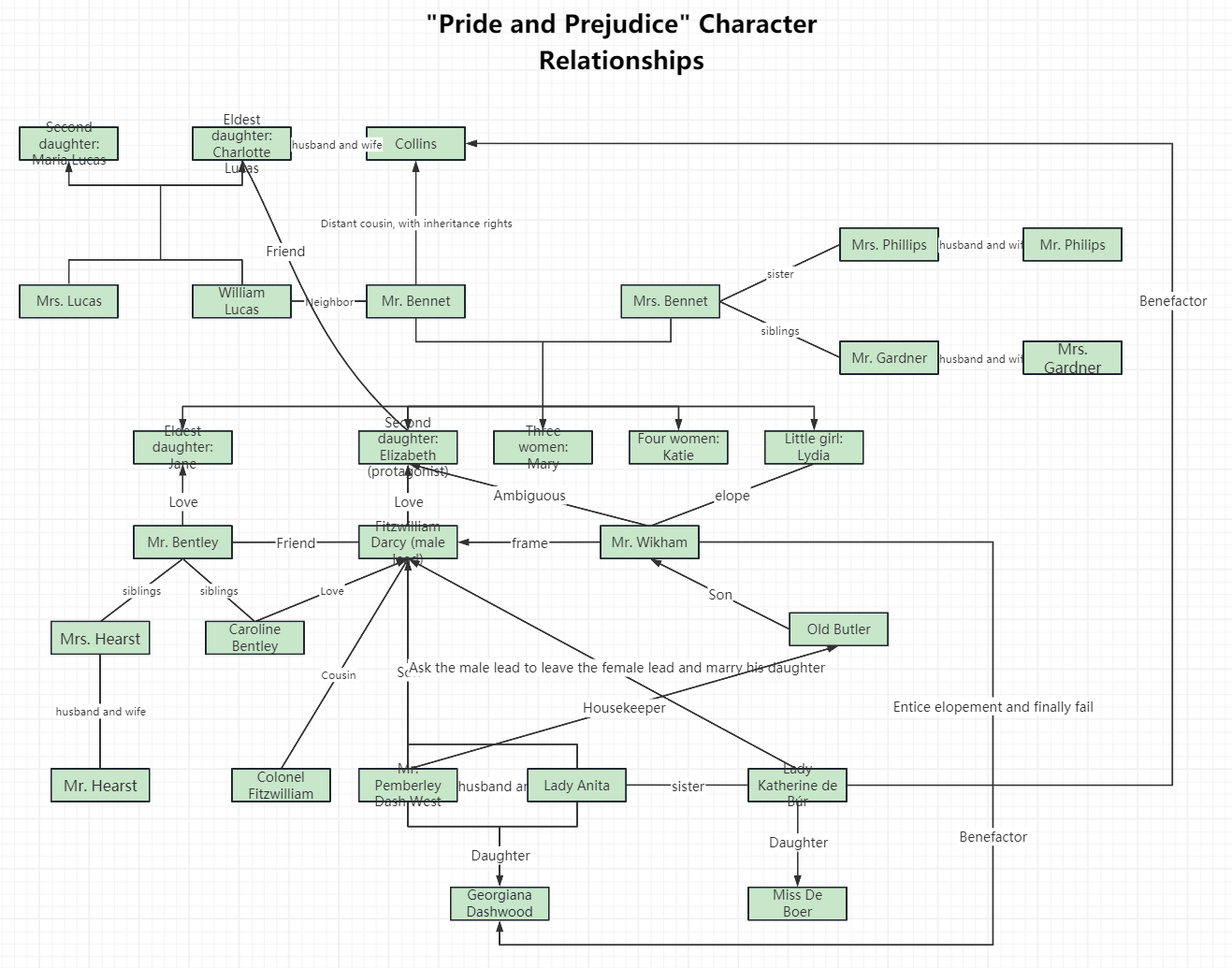Pride and Prejudice is one of the representative works of the famous British author Jane Austen, first published in 1813. This novel vividly reflects the life of the British gentry class from the late 18th to early 19th century through the marriage and love stories of the five daughters of the Bennet family. It not only explores themes of marriage and love but also delves into social class, wealth, and family.

Synopsis of Pride and Prejudice
Author's Biography
Pride and Prejudice is one of the representative works of British novelist Jane Austen (1775-1817). Jane Austen is an important novelist in the history of British literature, known for her delicate depiction of the daily life and marital status of the gentry class. Her works are renowned for their intricate plot design, humorous dialogue, and profound insights into human nature and society.
Austen was born into a clergyman's family in Hampshire, England, and received a good family education from an early age, especially in literature and history. Her writing career began around the age of 20, and in her short life, she completed six long novels, including Sense and Sensibility, Pride and Prejudice, Mansfield Park, Emma, Northanger Abbey, and Persuasion.

Author Biography of Pride and Prejudice
Background of Creation
Pride and Prejudice was written in 1813. Jane Austen lived in the English countryside, deeply influenced by the social class system and the limitations on women's status of her time. She used humor and satire to portray the cultural conflicts and human prejudices between the aristocracy and the middle class. The novel reflects the social customs and moral concepts of contemporary British society, while also exploring the contradictions between the freedom of choice in love and marriage and societal pressure. Through her precise language and delicate character portrayals, Austen demonstrated her profound insights into society and human nature.

Background of Pride and Prejudice
Character Introduction
The characters created by the author are distinct and vivid. The heroine, Elizabeth Bennet, the second of the five daughters of the Bennet family, is an intelligent, witty, and independent woman. She is known for her keen insight and strong sense of justice, with a deep understanding of social etiquette and worldly prejudices. The hero, Fitzwilliam Darcy, is initially portrayed as a proud and aloof gentleman, whose wealth and status make him appear arrogant. However, as the story progresses, Darcy gradually reveals his deep emotions, selfless kindness, and principled character.

Characters of Pride and Prejudice
Character Relationship Diagram
Pride and Prejudice depicts the social landscape of the English countryside through rich and complex character relationships. The characters in the novel are not only distinctive and three-dimensional, but their intricate relationships also serve as an important driving force for the plot.

Character Relationship Diagram of Pride and Prejudice
Artistic Features
Pride and Prejudice is renowned for its exquisite irony and refined language.
1. Irony: This is reflected in the depiction of the Bennet family and the love process between the protagonists Darcy and Elizabeth. Initially, they do not understand each other; Elizabeth thinks Darcy is very arrogant, while Darcy believes Elizabeth is prejudiced. However, through their gradual interactions, they come to know and love each other, demonstrating the artistic effect of irony.
2. Vivid and figurative language, especially the skillful use of satire and humor, is prevalent in the novel. It employs a lot of dialogue, metaphors, rhetorical devices, as well as satire and humor.
3. Language with humorous characteristics: A stark contrast is formed between the concise and absurd expressions and the solemn dialogues, creating intense ideological conflicts.

Artistic Features of Pride and Prejudice
Themes of the Work
Pride and Prejudice humorously and satirically explores social class and human prejudices. Through the love story of Elizabeth Bennet and Fitzwilliam Darcy, it reveals the cultural conflicts between the aristocracy and the middle class and their impact on individual destinies. The novel deeply reflects on the role of social etiquette and moral concepts, exploring the conflict between free choice and societal expectations.

Impacts of the Work
Pride and Prejudice has had a profound impact on world literature, with its superb narrative and deep character portrayals becoming a model for subsequent literary works. The work not only deeply reflects the class and moral concepts of contemporary British society but also, through irony and humor, reveals the complexities of human nature. Its influence extends to the exploration of love and marriage concepts, as well as the portrayal of female characters, affecting subsequent literary works' in-depth analysis of society and human nature.

Impacts of Pride and Prejudice
When we delve into Pride and Prejudice, we can not only experience Jane Austen's superb literary art and profound revelations of human nature but also feel her keen observations on social class, cultural conflicts, and individual destiny choices.
By studying the above mind maps, you should have a certain understanding of the character relationships and storyline of Pride and Prejudice. ProcessOn not only provides relevant mind maps but also a large number of templates for editing. Click Here to use them now.